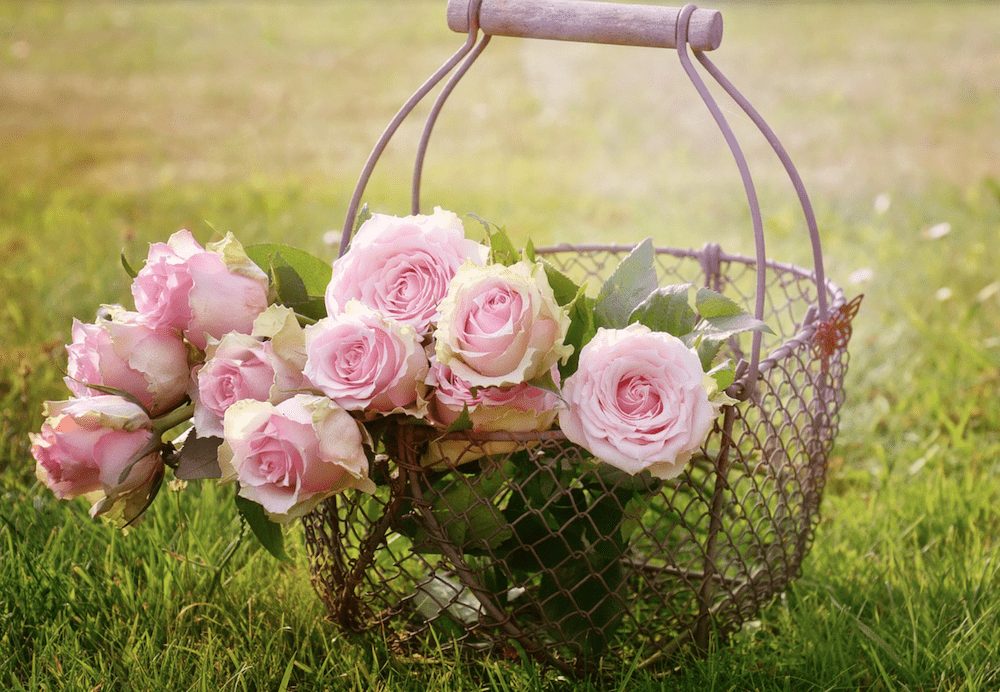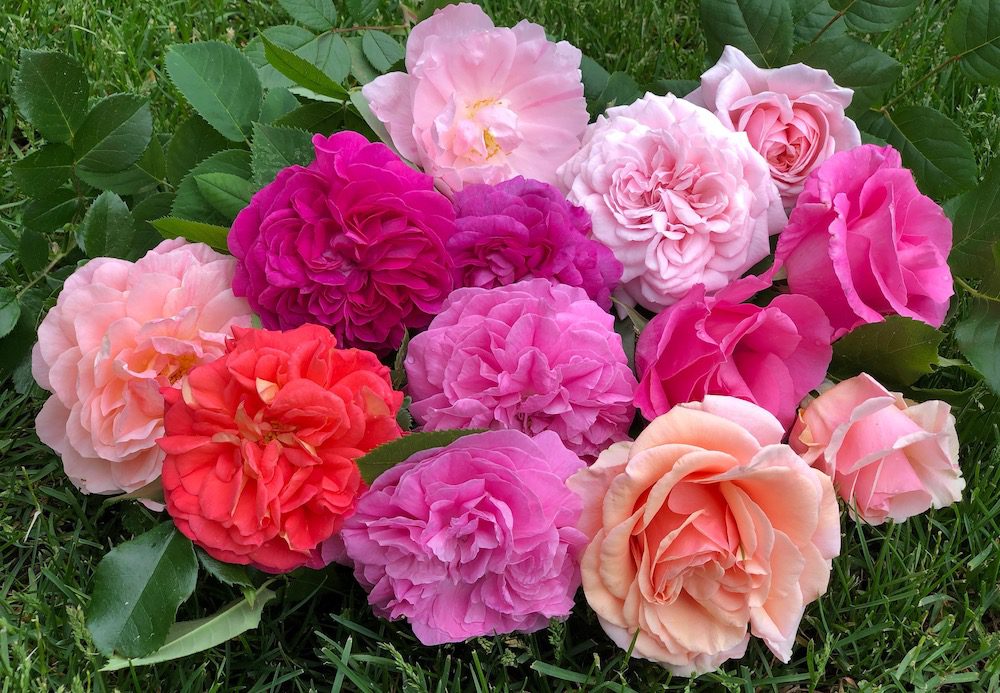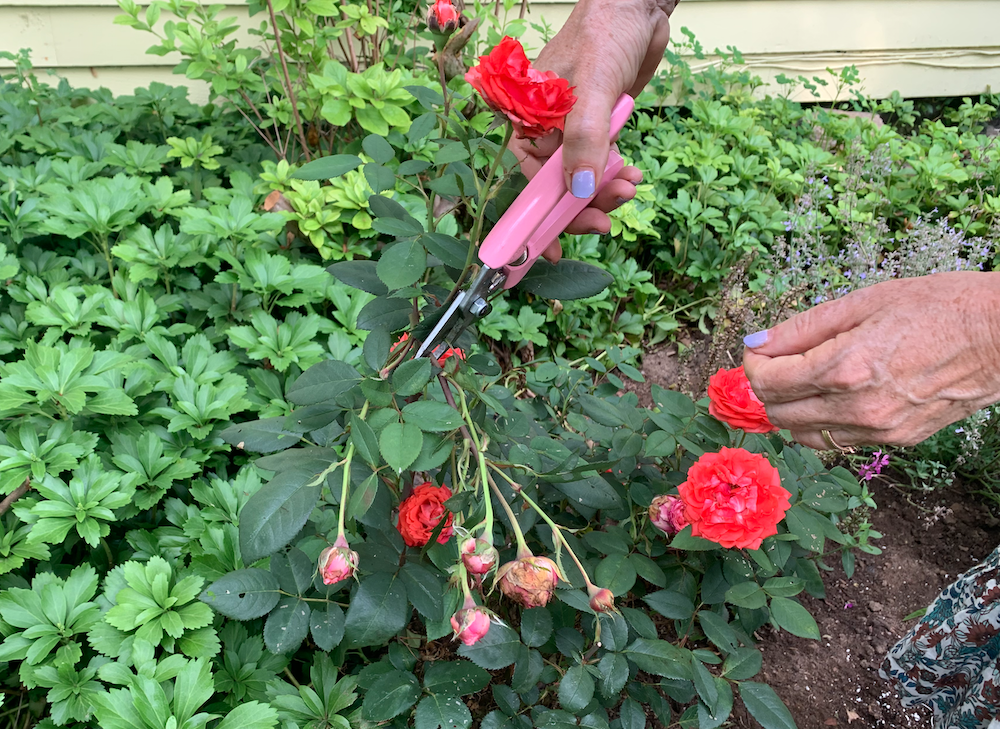Rose Expert Offers Monthly To-Do List for Gorgeous Blooms
By Josyane Colwell

I grew up on a farm in southern France with my grandparents who cultivated roses for the perfume industry. As a child, I learned every aspect of growing roses. Throughout my life, I have been a judge for roses as well as overseeing the rose garden at Lyndhurst Mansion. Here is what I’ve learned in a lifetime of loving, growing and nurturing roses.
1. Planting Roses
There are many criteria to consider when planting roses, amount of care, frequency of bloom, appearance, size of plant, hours of sunlight, quality of soil, disease resistance, seasonal foliage and rose hips, garden pests, etc. Nevertheless, roses have had a long history, satisfy many uses and offer a great deal of enjoyment.
I have learned that gardening is a bit like cooking. You start by following the recipe closely until you get a feel for how a dish comes together. Then, as you get more confident, you can start to tweak the method and ingredients and come up with a version of the dish that suits you and your taste best. As long as you follow a few basic rules, it doesn’t matter what you do to get to the end result for your roses. And that’s when if gets fun. With gardening, it’s exactly the same. There are tons of different ways of doing things and you choose what suits you and your garden best.
But gardening is also like real estate too. You need to think of the location where you are planting roses.

2) Site Selection and Preparation
- Roses like full sun. They do best with 6 to 8 hours of direct sun a day. Some roses are described as shade tolerant. For a rose, shade-tolerant usually means it will grow in 4 to 6 hours of sun.
- Roses like morning sun whenever possible. The morning sun burns the dew off the roses and makes them less likely to suffer from mildew and other diseases. However, the afternoon sun tends to be stronger than the morning sun so, if you are only able to provide the rose with a half-day of sun, choose the afternoon over the morning.
- Roses don’t like windy, exposed sites. On the other hand, they like good air circulation. Don’t place them too close to a wall or a fence (a minimum of 4 inches), unless you are planting a climbing rose. Good air circulation prevents disease.
- Roses don’t like to be waterlogged; they like good drainage. When planting a rose in your garden, pay attention to the condition of the site, particularly in winter and spring.
- Clear the area of perennial weeds
- In general, amend the soil by adding an equal amount of compost and really, old, farmyard manure (if you can find it). If you are gardening in heavy clay, make sure to amend your soil with plenty of organic matter.
- Roses prefer to grow in soil with a pH between 6 and 6.5. If your soil is too acidic, you can add lime. If it’s too alkaline, you can add gypsum (hydrated calcium sulfate).
- Avoid planting roses in areas where roses have previously grown. If the old roses had any root diseases, they will still be in the soil. If you’re planting a rose in an area that had roses, dig out a 2-foot by 2-foot space and replace with a fresh mix of topsoil and compost.
3) Ongoing Care Tips
- Fertilize roses each month through September for increased quality and quantity. A well-balanced food (such as 20-20-20) works well. Roses also love Epsom salts (Magnesium sulfate) so sprinkle 1 cup around the base of each plant.
- Practice deadheading. Cut spent flowers 1/2:” above a set of 5 leaves.
- Carefully prune hybrid tea roses in spring to about 3 to 7 outward facing buds per cane. Remove crossing branches, crowded growth, spindly branches and dead wood to the ground.
- Protect against black spot and other fungal diseases when the leaves are fully opened. Use the Cornell formula and apply to foliage weekly and after each rain (Cornell formula: mix 3 TSP baking soda with 2 ½ TBSP of light horticultural oil into 1 gallon of water. Mix and apply as a spray)
Winter is the ideal time to plant bare-rooted roses. However, even in winter, if the plant appears dormant, the plant will need water to survive. In cold district planting of dormant bare-rooted rose stock can be held over until the danger of frost is past. In an established rose garden, winter is pruning time. Old plants should have unproductive wood removed and the rest of the growth pruned by approximately one-third. Cut the stem to hardwood–facing plump buds and open up the bush in the center to allow better light penetration and good air circulation. All diseased prunings should be removed and disposed of; never place them in a compost bin. The bush and surrounding soil can be sprayed with a lime sulfur chemical to prevent fungal spores from overwintering.
Now here is your calendar list to follow and have your recipe to grow beautiful fragrant blooms to enjoy.

4) Monthly Rose Calendar
January
Apply Dormant Oil and contact fungicide
February
Prune existing roses
- Plant barefoot roses
March
Apply Premium 2-in-1 Fertilizer to Established Roses
- Plant bareroot roses
- Remove mulch
- Top dress with 2” layer of cow manure and replace mulch
April
After danger of frost, remove mulch from around the graft
- Begin regular spraying every 7 – 10 days through October
- Begin planting potted roses
May
Continue planting plotted roses
June
Deadhead roses
- Water 3-5 gallons weekly
- Continue spraying
July
Water 3-5 gallons weekly
- Continue Spraying
August
Deadhead roses
- Water 3-5 gallons weekly
- Continue Spraying
September
Deadhead roses
- Water 3-5 gallons weekly
- Continue spraying
- If using a slow-release fertilizer, stop an application
October –
Deadhead roses
- Water 3-5 gallons weekly
- Stop spraying
- Order new roses
November –
Prepare new beds for planting next season
- Order new roses
- Every 2-3 years have soil tested and adjust the pH level
December
Cut back roses to “waist-high” about 3 feet
- Place mulch 6” high over the graft for winter protection
- Order new roses
So that’s your monthly calendar to follow. And as for pruning tips – here is some advice I’ve learned over the years.
5) Pruning

When tackling roses bear the following in mind:
- Cuts should be no more than 5mm (1/4 in) above a bud and should slope downwards away from it, so that water does not collect on the bud. This applies to all cuts, whether removing dead wood, deadheading or annual pruning
- Cut to an outward-facing bud to encourage an open-centered shape. With roses of spreading habit, prune some stems to inward-facing buds to encourage more upright growth
- Cut to the appropriate height, if a dormant bud is not visible
- Cuts must be clean, so keep your secateurs sharp. For larger stems, use loppers or a pruning saw
- Prune dieback to the healthy white pith
- Cut out dead and diseased stems and spindly and crossing stems
- Aim for well-spaced stems that allow free airflow
- On established roses, cut out poorly flowering old wood and saw away old subs that have failed to produce new shoots
- With the exception of climbing roses and shrub roses, prune all newly planted roses hard to encourage vigorous shoots
- Trace suckers back to the roots from which they grow and pull them away

Now it’s time to enjoy roses, the national flower of the United States but also the most cited favorite flower around the globe. You may also want to read this article on all the different varieties to consider when planting roses.
